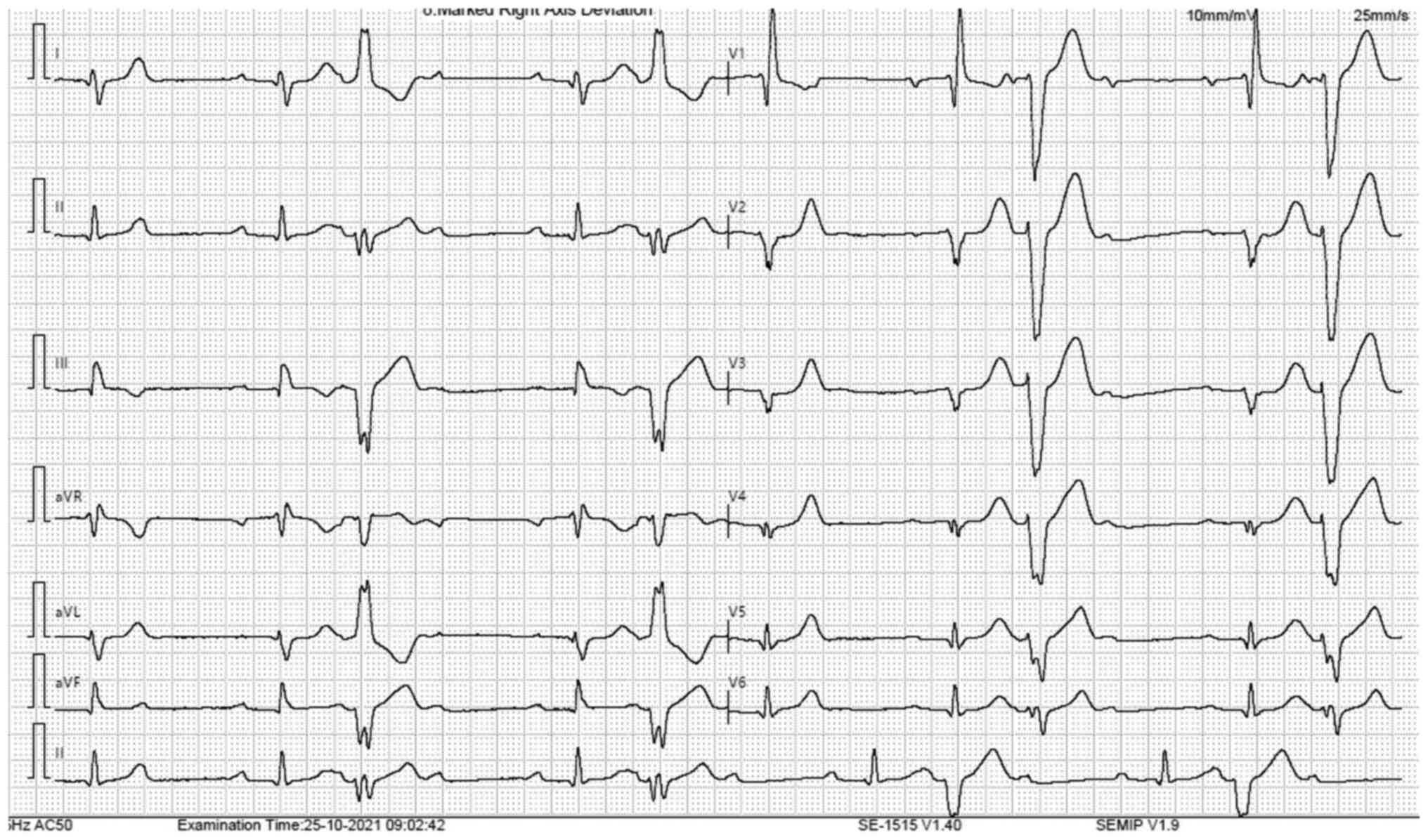Syncope in the setting of trifascicular block and retrograde concealed conduction: A case report
- Authors:
- Published online on: November 23, 2023 https://doi.org/10.3892/mi.2023.124
- Article Number: 64
-
Copyright : © Sfairopoulos et al. This is an open access article distributed under the terms of Creative Commons Attribution License [CC BY 4.0].
Metrics:
Total
Views: 0 (Spandidos Publications: | PMC Statistics:
)
Total PDF Downloads: 0 (Spandidos Publications: | PMC Statistics:
)
Abstract
In clinical practice, the accurate diagnosis of the causes of syncope is often challenging and demanding. Moreover, certain rare electrocardiographic phenomena may complicate the diagnostic workup, leading to imprecise diagnoses. The present study briefly describes the case of an 82‑year‑old male patient with ischemic cardiomyopathy who suffered syncopal episodes in the setting of trifascicular block. The 12‑lead electrocardiogram revealed premature ventricular contractions and non‑conducted P waves due to the phenomenon of retrograde concealed conduction. Following the exclusion of myocardial ischemia, an electrophysiological study yielded abnormal results and a biventricular pacemaker was implanted. Although retrograde concealed conduction is considered a benign phenomenon caused by the transient modification of antegrade atrioventricular conduction characteristics, further meticulous investigation is required in patients with concomitant baseline conduction abnormalities and/or structural heart disease.










